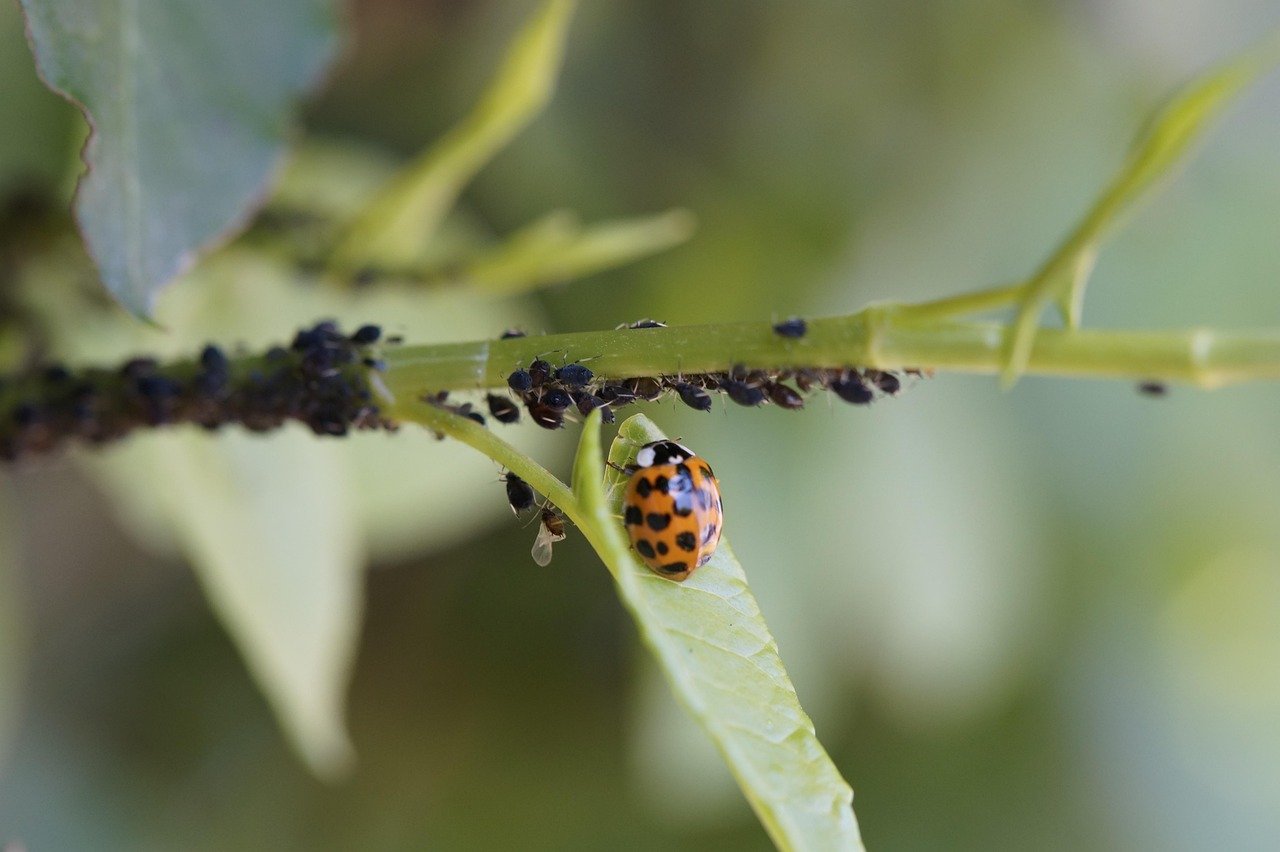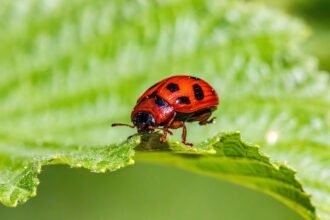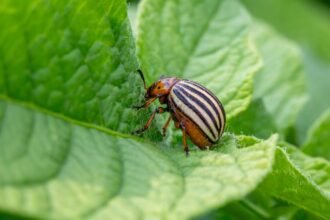Crop diseases can be a major challenge for gardeners and farmers, affecting plant health and reducing yields. Identifying these diseases early and knowing how to treat them is crucial to protecting your crops and ensuring a healthy harvest. In this guide, we’ll discuss how to recognize the symptoms of common crop diseases, and provide effective treatment options, including the use of fungicides and resistant plant varieties.
1. Common Types of Crop Diseases
Crop diseases are typically caused by fungi, bacteria, viruses, and nematodes. Each type of disease has distinct symptoms and requires different treatment strategies. Below, we’ll explore the most common crop diseases and their identification.
2. Fungal Diseases
Fungal diseases are caused by various types of fungi and are among the most common plant diseases. Fungi thrive in moist, warm conditions and can spread rapidly if not controlled.
a. Powdery Mildew
- Symptoms: White, powdery spots appear on leaves, stems, and buds. As the disease progresses, leaves may yellow, curl, and eventually die.
- Common Crops Affected: Cucumbers, squash, melons, beans, and roses.
Treatment:
- Remove Infected Plant Parts: Prune away affected leaves and stems to reduce the spread.
- Fungicides: Apply sulfur-based or potassium bicarbonate fungicides to prevent further infection.
- Cultural Control: Space plants adequately for air circulation, and water plants at the base to avoid wetting the foliage.
b. Early Blight
- Symptoms: Dark, concentric rings with yellow halos appear on older leaves. As the disease progresses, the lesions enlarge, and leaves may turn brown and die.
- Common Crops Affected: Tomatoes, potatoes, peppers, and eggplants.
Treatment:
- Remove Infected Leaves: Prune and dispose of infected plant parts.
- Fungicides: Apply copper-based fungicides or chlorothalonil as a preventative.
- Resistant Varieties: Plant disease-resistant tomato or potato varieties to reduce the risk.
c. Downy Mildew
- Symptoms: Yellow spots appear on the upper surface of leaves, with fuzzy, grayish mold visible on the underside. Infected leaves turn brown and die.
- Common Crops Affected: Grapes, cucumbers, lettuce, and spinach.
Treatment:
- Fungicides: Use phosphorous acid-based fungicides or metalaxyl to treat infected crops.
- Improve Airflow: Prune plants to improve air circulation and avoid overhead watering.
3. Bacterial Diseases
Bacterial infections are caused by harmful bacteria that often enter plants through wounds or natural openings. Bacterial diseases are typically spread by water, wind, or insects.
a. Bacterial Wilt
- Symptoms: Leaves wilt suddenly and turn yellow or brown. The plant may collapse, and a slimy, foul-smelling ooze may be seen when the stem is cut.
- Common Crops Affected: Tomatoes, cucumbers, and melons.
Treatment:
- Remove Infected Plants: Completely remove and destroy infected plants to prevent the spread.
- Copper-Based Bactericides: Use copper-based bactericides as a preventative measure, especially during humid weather.
- Resistant Varieties: Plant resistant cucumber and tomato varieties if bacterial wilt is common in your area.
b. Bacterial Spot
- Symptoms: Small, water-soaked lesions with yellow halos appear on leaves. Infected areas may turn brown or black, and the leaves may fall prematurely.
- Common Crops Affected: Tomatoes, peppers, and cucumbers.
Treatment:
- Remove Infected Leaves: Prune away any infected plant parts.
- Bactericides: Apply copper-based bactericides or streptomycin-based treatments.
- Avoid Overhead Watering: Water plants at the base to minimize water splashing onto the leaves.
4. Viral Diseases
Viral diseases are transmitted by insects or infected plant material. These diseases can spread quickly and often cause permanent damage to plants.
a. Tomato Mosaic Virus (TMV)
- Symptoms: Yellow streaks, mottled or curled leaves, and stunted growth. Infected plants may exhibit mosaic patterns of light and dark green on their leaves.
- Common Crops Affected: Tomatoes, peppers, and tobacco.
Treatment:
- Remove Infected Plants: Infected plants should be removed and destroyed to prevent further spread.
- Insect Control: Control aphids and other insects that may spread the virus.
- Use Resistant Varieties: Choose virus-resistant tomato and pepper varieties to reduce the risk of TMV.
b. Cucumber Mosaic Virus (CMV)
- Symptoms: Yellowing of leaves, stunted growth, and distorted fruit. Leaves may show mosaic-like patterns.
- Common Crops Affected: Cucumbers, melons, and peppers.
Treatment:
- Control Aphids: Since aphids are the primary vectors of CMV, controlling aphid populations is key.
- Remove Infected Plants: Eliminate infected plants promptly to reduce the spread of the virus.
5. Nematode Diseases
Nematodes are microscopic roundworms that live in the soil and can attack plant roots. They cause significant damage by feeding on the root systems, preventing the plant from taking up nutrients.
a. Root Knot Nematodes
- Symptoms: Swollen or galled roots, stunted growth, and yellowing of leaves. The plant may appear weak and fail to thrive.
- Common Crops Affected: Tomatoes, peppers, carrots, and potatoes.
Treatment:
- Soil Solarization: Use plastic sheeting to heat the soil and kill nematodes.
- Nematoide-Resistant Varieties: Choose nematode-resistant plant varieties when possible.
- Beneficial Nematodes: Introduce beneficial nematodes that target and kill harmful nematodes in the soil.
6. Preventative Measures and Good Gardening Practices
- Crop Rotation: Rotating crops each season prevents the build-up of soil-borne pathogens and pests.
- Good Hygiene: Regularly remove fallen leaves, debris, and diseased plant parts from your garden. Clean tools to avoid transferring diseases between plants.
- Proper Watering: Avoid overhead watering to reduce the risk of fungal diseases. Water at the base of plants to minimize leaf wetness.
- Mulching: Use mulch to suppress weeds and keep soil moisture levels consistent, which helps reduce stress on plants and prevents disease spread.
7. Chemical and Organic Treatment Options
For both fungal and bacterial diseases, there are organic and chemical treatment options available:
- Organic Treatments:
- Neem Oil: Effective against a variety of fungal and insect pests.
- Copper Fungicides: Organic-approved fungicides that help control fungal diseases like blight and mildew.
- Baking Soda: A mixture of baking soda and water can act as a mild fungicide for certain plant diseases.
- Chemical Treatments:
- Fungicides: Synthetic fungicides like chlorothalonil and thiophanate-methyl are effective in controlling fungal diseases like early blight and powdery mildew.
- Systemic Insecticides: These are absorbed by the plant and can control pest populations that are not easily removed by physical means.
8. Conclusion
Recognizing the symptoms of crop diseases early and applying the appropriate treatment is essential to maintaining a healthy garden. Whether you’re dealing with fungal, bacterial, viral, or nematode-related diseases, a combination of good gardening practices, resistant plant varieties, and careful use of treatments can help you keep your crops safe from harm. By taking a proactive approach to disease management, you can protect your plants while minimizing environmental impact and promoting sustainable gardening practices. 🌱







